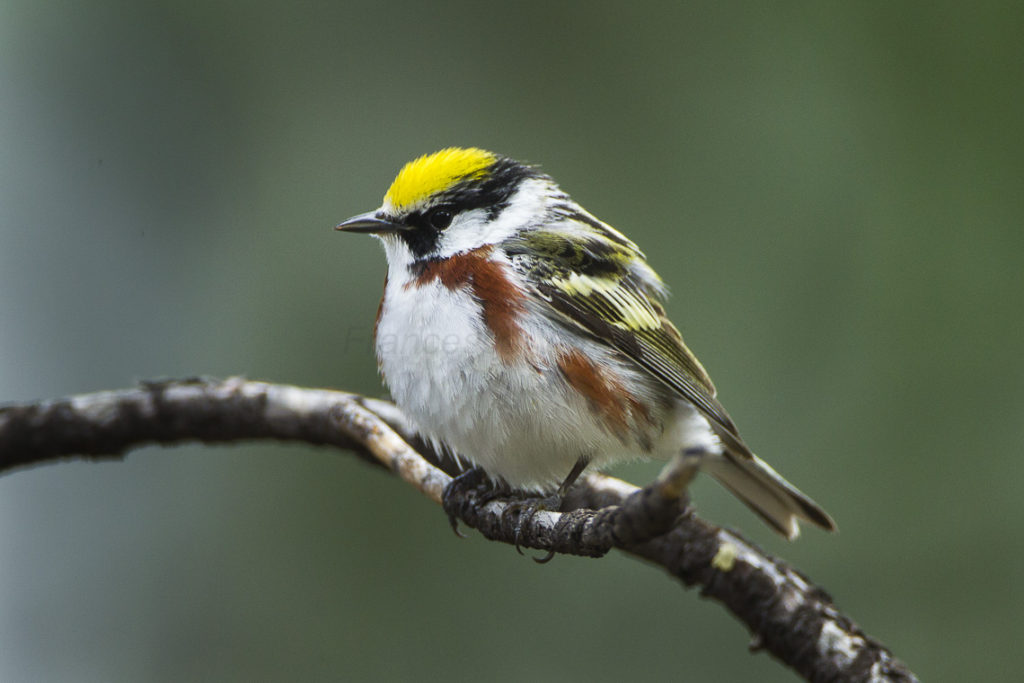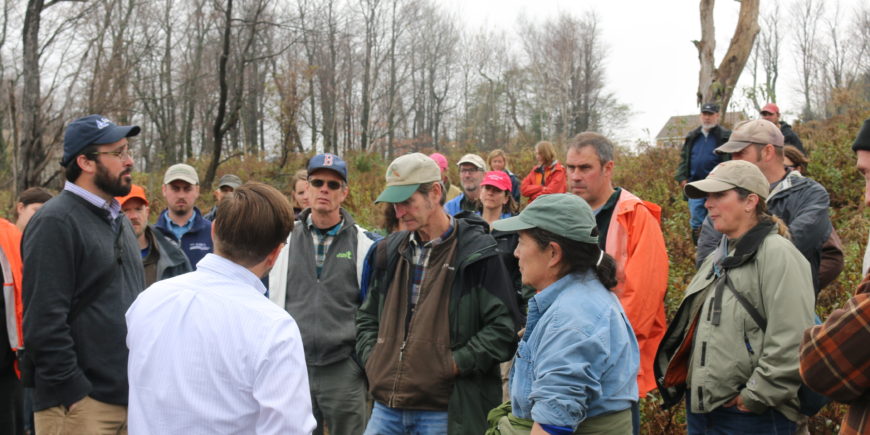Can we have too much mature forest? How can we provide sufficient habitat for wildlife species which are being crowded out by our ever maturing forests. What steps can land managers take to create more diverse habitats in our forest landscape?
Those were some of the questions examined at a well-attended all-day Forest Wildlife Habitat Seminar that the Mass Forest Trust and the Ruffed Grouse Society held in Plainfield and Hawley on November 2nd for foresters, land managers and representatives from state and federal agencies. High demand and limited seating capacity meant the Forest Trust had to limit invitees.
The morning session heard presentations from John Scanlon from Mass Wildlife, Jeff Ritterson from Mass Audubon, Andy Weik from the Ruffed Grouse Society, and Bill Leak and Mariko Yamasaki from the U.S. Forest Service on the current state of wildlife in Massachusetts woodlands and how the current mix of forest stands doesn’t provide enough habitat for birds and wildlife species that depend upon grassland, shrubland and early forest growth to live and breed in.
Where 40 percent of woodlands after the 1938 hurricane were in the young forest stage here, today just 4 percent of Massachusetts’ 3 million acres of forests are in the early growth stage that species like ruffed grouse, New England cottontails, and rufus sided towhees need, far less than the 10 percent target for these open habitats. The light selective harvesting that is most commonly done doesn’t generally create large enough openings in the canopy to allow sufficient herbaceous growth of food plants and cover these species depend upon.

Chestnut sided warblers, whippoorwills and New England cottontails all need young forest habitats
Complicating the problem is the fragmentation and small parcel size of many privately owned woodlands here, the added cost that making larger openings entails due to the large number of low value trees that would need to be cut, and the limited markets for the low grade wood that clearing such forest openings generates in large volumes.
Ideal management would create a patchwork of age classes and habitats across the landscape by cutting large enough blocks and openings every 10 years or so, researchers said. Rather than re-cutting such blocks when the stands grow past the early successional stage, it would be better and more cost effective to cut new openings and allow previously cut openings to continue to grow to maturity. To reach the 10 percent target for open habitats, more than 10,000 acres of such openings would need to be created every year across the state.
In the afternoon field portion of the workshop, participants visited two Hawley woodlands, one belonging to the Forest Trust that had 30 acres of ice-damaged trees clearcut with funding from a Mass Wildlife Habitat Management Grant to regenerate the forest and provide new forest habitat, and a second woodland now on Mass Wildlife property that had large openings cut 13 years earlier to see how the forest has regrown and how neighboring stands might be considered for new openings now.


